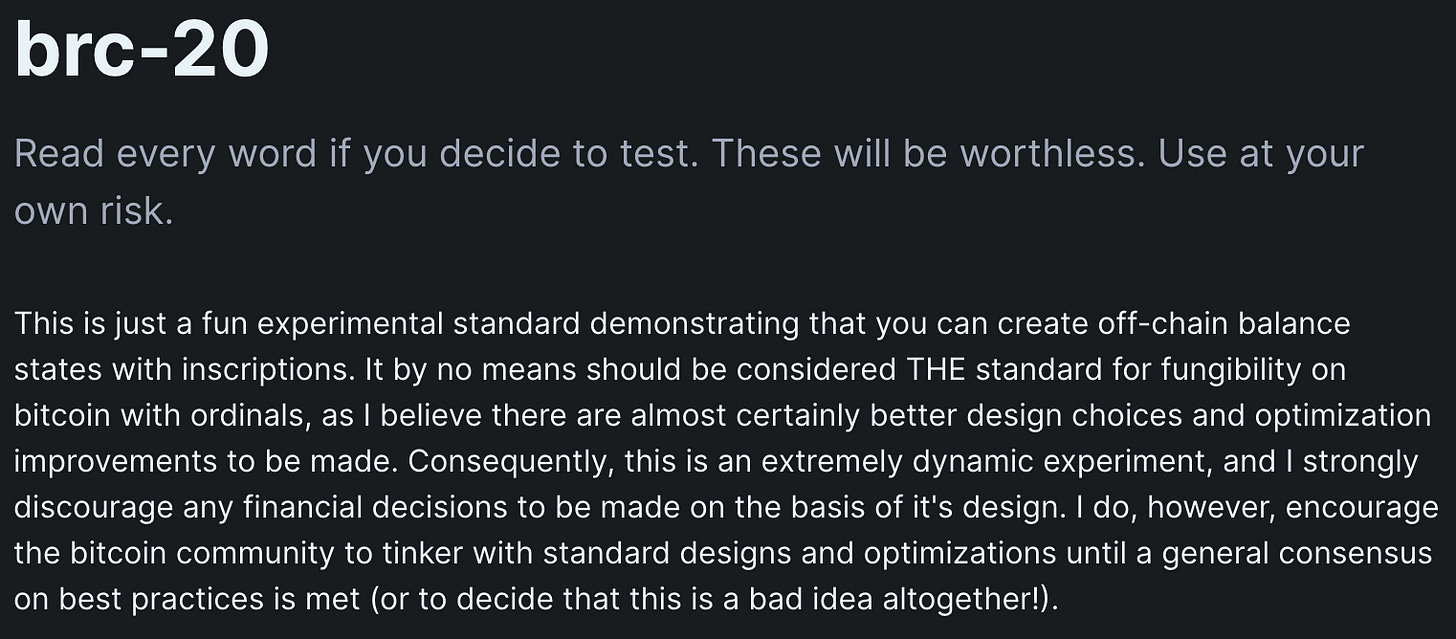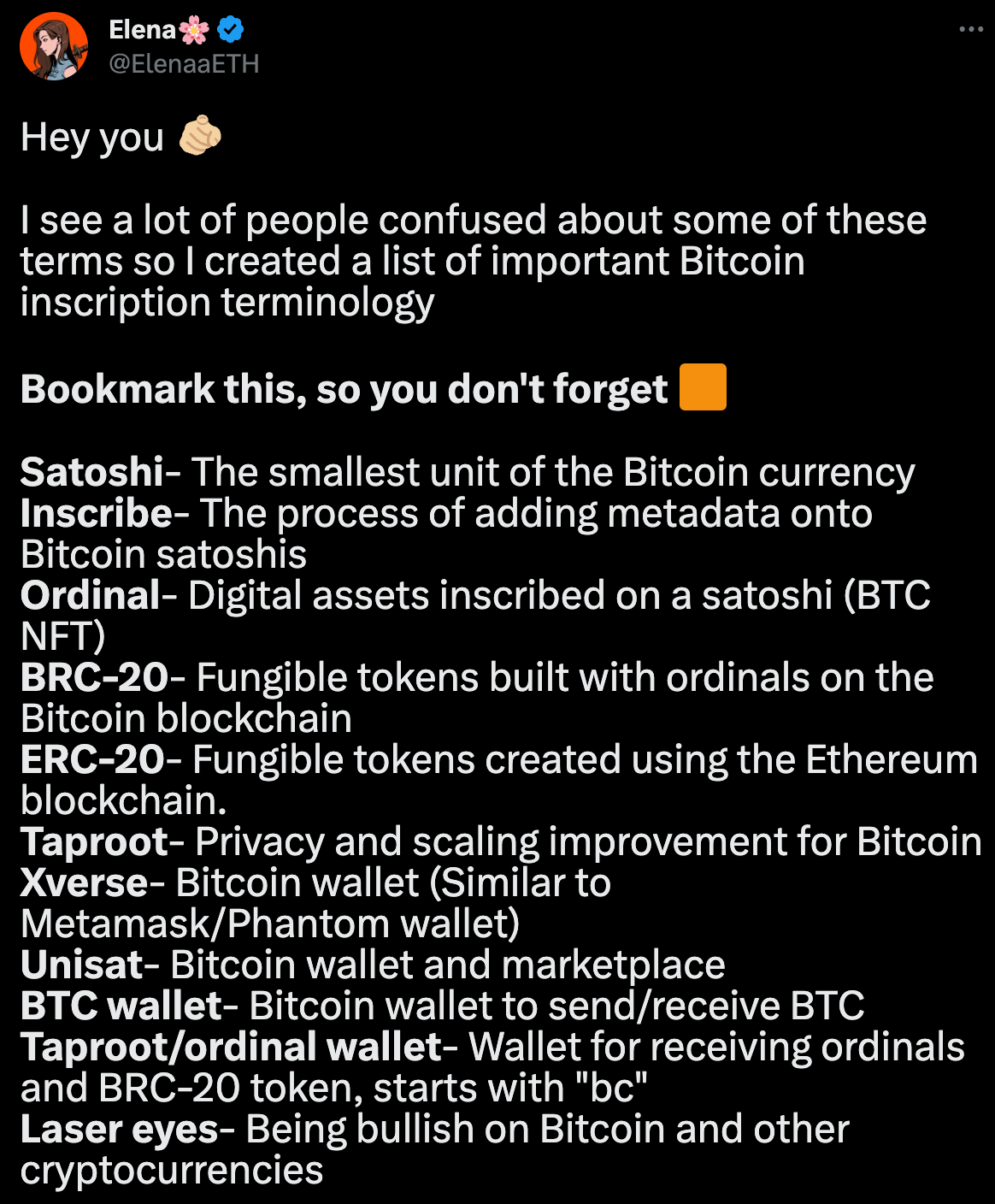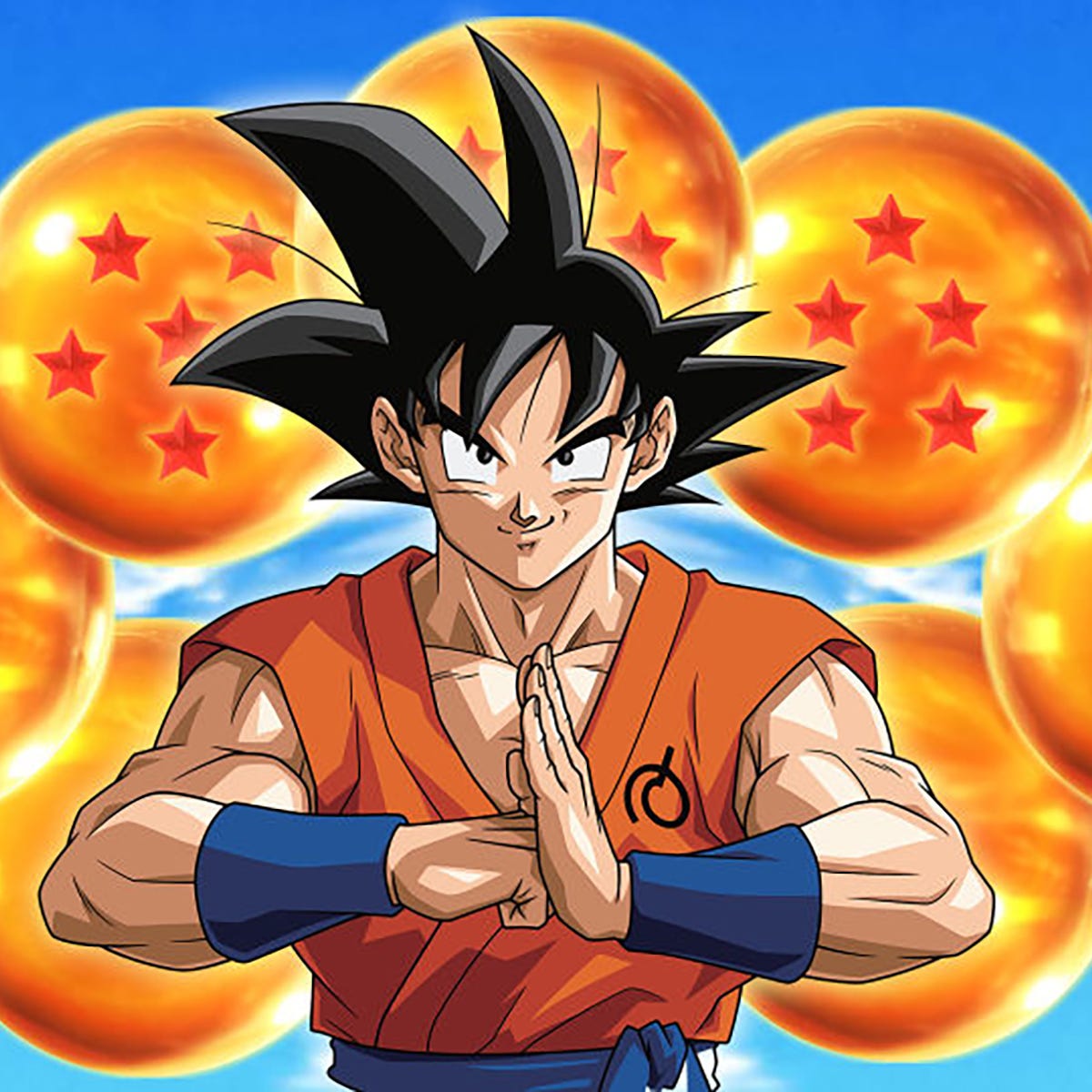A Deep Dive on Ordinals, Inscriptions, BRC-20s, and more
There’s a wonderful Chinese proverb that says: the best time to plant a tree was 20 years ago, the next best time is today.
When I got into NFTs back in March 2021, I genuinely felt like I missed the boat, that I was late to the party. Ah, nuts, why didn’t I pay attention years earlier, or even months earlier?
After beating myself up for longer than desirable, I jumped in and started tinkering in the wild world of web3, and the rest is history. Sure it probably would have been better in many respects if I had planted my NFT tree in 2017 and claimed some Punks, but, turns out early 2021 was still a pretty good time to be planting a tree in this space.
Fast forward to 2023. Bitcoin NFTs. Ordinals, Inscriptions. I have the same feeling again. They have been flooding the timeline sporadically since January and then even more voraciously over these last few weeks.
I wish I got into them in January/Feb. In fact, I knew about them then, I identified that they were probably going to be a big deal, and… I still did not dive in properly. Here’s a post I made in our ZA Discord Server on the 9th of Feb:
It’s not easy to have conviction in something before others do, though. Everyone wishes they minted Punks for free in 2017, but back then, you were laughed at for wasting $2 in gas and congesting the network for claiming a dumb pixelated punk person.
Anyway. I wish I minted Punks, I wish I actually went all-in on Ordinals in Feb. I did neither of those things, but that is okay. Life is still good. There is zero point lamenting over the past.
And, of course.. we’re still early.
I’m getting ahead of myself. I’m sure people are wondering what Ordinals even are. What is an inscription? What are BRC-20s? Where do you get started? How do you get started?
But first, a disclaimer: I am not technical. I am not a dev. I am not an expert on Ordinals. I stand on the shoulders of giants and hope to parse a complex topic into as easy-to-understand language as possible, to help get people from zero understanding to a layperson’s understanding. I provide some additional resources at the end for those looking to dive deeper.
What Are Ordinals?
Most people reading this will know what an NFT is. If you don’t… boy I have to wonder how you found yourself here (and will suggest you sign up to this free introductory course)!
An Ordinal is, basically, an NFT on the Bitcoin Blockchain.
For those who know the difference between on-chain NFTs and off-chain NFTs: Ordinals are entirely on-chain. This is kind of a big deal.
When something is stored “on-chain”, it effectively means that the entirety of the token is etched forever, immutably, on the blockchain. Nobody can change it.
You can’t change it, a “project founder” can’t change it, a disgruntled (or even a gruntled) artist (wow gruntled is a real word? shocked I didn’t get a red squiggly line on that one) can’t change it. Nobody can change it.
The United States Government could hold a nuke to Satoshi’s head, and it still wouldn’t be able to be changed. Immutable.
Some people prefer to refer to these as Digital Artifacts (or Artefacts) instead of NFTs. The idea being that Digital Artifacts must be immutable and forever recoverable, and not all NFTs are. In fact most NFTs on other blockchains, ie on Ethereum, are very mutable, and can be changed.
Semantics aside, there seems to be a narrative forming about how Ordinals are so much better because they are entirely on-chain. It’s worth keeping in mind that there are on-chain NFTs on Ethereum as well: Autoglyphs being a famous example.
It is also worth keeping in mind that, for many use cases, being able to update metadata is a pro and not a con. For “Digital Artifact” status, this is not the case, but the use-cases for digital assets are far reaching and sometimes a little (or even a lot of) centralization is not actually such a bad thing.
How… Are Ordinals… A Thing?
This is a great question. Basically, a person named Casey Rodarmor released the infrastructure for people to create Ordinals in late January, 2023. In theory someone could have done it earlier but.. just.. didn’t.
Effectively, Casey developed a method by which individual satoshis can be inscribed with content (text, code, image files, anything up to a modest file size limit). Those individual satoshis can then be transferred between wallets as Ordinals / NFTs. It actually seems pretty freaking cool to me.
What is a satoshi?
A satoshi is the smallest divisible unit of a Bitcoin.
1 Bitcoin is comprised of 100,000,000 satoshis.
Similar to Ethereum where the smallest unit is not Ether but actually wei.
1 Ether = 1,000,000,000,000,000,000 wei.
Ever wonder why gas is paid in “gwei” on Eth?
1 gwei = 1,000,000,000 wei.
And this is meant to be a layperson’s, simple, easy to understand article… and we wonder why we haven’t gone mainstream yet 🫠.
Why are they called Ordinals?
Basically the numbering scheme for tracking / transferring the individual satoshis is based on Ordinal Theory / Ordinal Numbers, hence, Ordinals.
Okay, Now What About BRC-20s?
Ever since Ordinals became a thing, there has been a flurry of activity as tinkerers, innovators, builders, devs, whatever you want to call them, have been trying to do “cool new stuff” with Ordinals.
One such person, domodata, ended up creating an experiment in an effort to introduce fungibility to Ordinals (similar to how ERC-20 is the token standard for fungibility on Ethereum).
Obviously, degens gonna degen, and there has been a flood of different BRC-20 tokens hitting the market, to varying degrees of success. The “first” and largest marketcap BRC-20 is $ORDI. You can view a list of the top tokens here.
How To Get Started / Where To Begin?
Okay this is all well and good in theory but what if you want to start collecting and trading these things? What wallet should you use? What are the marketplaces?
Wallet
I was recommended xverse as a wallet and I also recommend it. It’s very easy to set-up. If you’ve used MetaMask before, it’s basically the same. Install a browser plug-in, set up an account, write down and store your seed phrase ON PEN AND PAPER, **NOT** ON ANY SORT OF ELECTRONIC DEVICE, set a password, and you’re off to the races.
This is what it will look like when you’re set-up:
Something important to note is that there are two addresses you need to pay attention to. Your BTC address which you should only use for normal Bitcoin transactions, and your Ordinals & BRC-20 address which you should only use for Ordinals and BRC-20s.
In order to find your Ordinals address, click on “Receive” and it will pop up:
Other Wallets
It’s not a bad idea to have back-up wallet options, so here are a couple more that are generally well recommended:
Marketplaces
There are a bunch of marketplaces you can use to trade Ordinals; these are the two most popular:
Popular Projects
I’m certain to miss some, and this doesn’t include the hyped/anticipated projects launching soon, but just to give you an idea of some of the bigger projects out there on Ordinals right now:
Taproot Wizards (not yet launched)
Who To Follow
I’ve begun to put together a Twitter List of people I find interesting to follow in this space. Twitter Lists are super powerful ways to make your time on Twitter a lot more focused, and far too few people use them. It’s public so anyone can follow the list and immediately have a timeline full of people way-smarter-than-me when it comes to this Ordinals stuff: https://twitter.com/i/lists/1668394175618850817?s=20
Glossary
I was gonna create my own but why reinvent the wheel. The ever excellent Elena already shared this (give her a follow!):
Additional Resources
Bitcoin Whitepaper (everyone should read this!)
https://twitter.com/ElenaaETH/status/1661859143257300993
https://twitter.com/BitGod21/status/1656624375108337667
https://twitter.com/OnChainMonkey/status/1668055924597194753
https://corporatetrash.beehiiv.com/p/bitcoin-web3-starter-kit
https://zkshark.substack.com/p/ordinals-inscriptions-and-rare-sats
I know this is a lot to digest — just this Letter alone, without all the above resources. Take your time, Ordinals take a bit of getting used to (just like everything in this space, it seems). One of the best ways to learn is to surround yourself with others who are also learning, which is something we focus on at ZenAcademy. Come hang out in our server to chat with others going on this wild Ordinals journey together. We’re all there to help each other out.
WHY?
I originally wanted to start with this, and then I wanted to end with it, and now I am going to delay it until Part 2. There’s a lot to the “why” behind Ordinals, and I want to dig into that as well as the culture of the ecosystem and ponder the trading psychology of it all.
One question on my mind (and others) is: “who is trading BTC NFTs?”
Is it the same people who traded ETH NFTs?
Are most projects junk?
How do you find the good projects?
How do allowlists work?
What are uncommon and rare sats?
Who decides the value and rarity of these things?
Is it all a ponzi?
Is it really like 2021 all over again?
Who’s building the coolest stuff on Ordinals?
What great art is there?
What projects do I have my eye on?
I’ll answer all these, and more, next time on Dragon Ball Z (Part 2 dropping same time next week, make sure you’re subscribed to get it as soon as it goes out).
Disclaimer: The content covered in this newsletter is not to be considered as investment advice. I’m not a financial adviser. These are only my own opinions and ideas. You should always consult with a professional/licensed financial adviser before trading or investing in any cryptocurrency related product.
- SEO Powered Content & PR Distribution. Get Amplified Today.
- EVM Finance. Unified Interface for Decentralized Finance. Access Here.
- Quantum Media Group. IR/PR Amplified. Access Here.
- PlatoAiStream. Web3 Data Intelligence. Knowledge Amplified. Access Here.
- Source: https://zeneca33.substack.com/p/letter-39-on-bitcoin-ordinals-part









